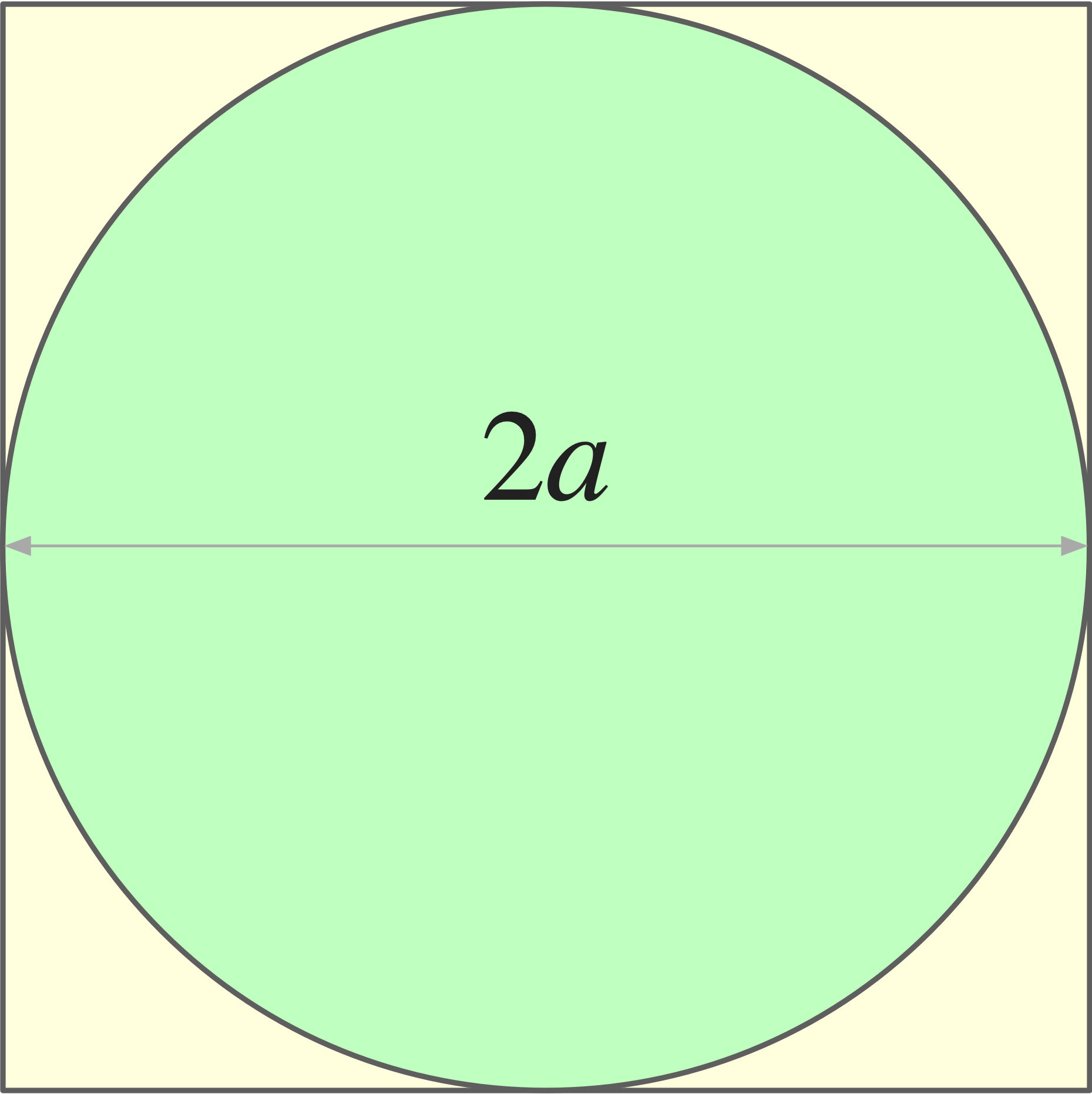Computing pi (on pi day!)
In observance of Pi Day (March 14), we worked out a numerical computation of the number

A circle inscribed in a square.
We started with the observation that a circle inscribed in a square covers
The fraction of the square’s surface covered by the circle is given by:
Any point inside the square has a
using a square with an inscribed circle:
N <-- number of points thrown at random, inside square
M <-- number of points inside circle
return 4*(M/N) as approximation of pi
The first thing we need to do is to set up the square with an inscribed circle, in a way that we can manipulate computationally. Next we need a way to tell if a random point inside a square is also inside the circle. And, of course, we need a way to generate random numbers.

Setting up the computational model we need.
The geometric set up is straight forward, and shown to the right. If our square has an edge with length
Consider a point inside the square as shown in the figure. This point, at
Now, we can begin putting together some code in Java.
public static double pi(int N) {
int M = 0; // how many points inside circle
for (int i=0; i < N; i++) { // loop to throw N points
// x = random number anywhere from -a to a
// y = random number anywhere from -a to a
double z = math.sqrt(x*x+y*y); // distance of random point (x,y) from center
if (z <= a) // is distance less than radius?
M++; // point is inside circle; count it.
}
return 4.0*((double)M/(double)N); // approximate value of pi
}
The last thing we need to analyze is how to find a random number in the interval from
Java random number |
random number between |
0 |
|
1/2 |
0 |
1 |
This can be accomplished with the following expression:
where
1/**
2 * Computes pi by throwing N points, at random, inside a square and counting how many
3 * fall within an inscribed circle.
4 *
5 * @param N int number of random points to throw inside the square
6 * @return an approximate value of pi
7 */
8public static double pi(int N) {
9 // Set up a random number generator
10 Random rng = new Random();
11 // Radius of inscribed circle; also determines size of square
12 double r = 1.0;
13 // Initialize counter of points inside circle
14 int M = 0;
15 // Set up loop to try N random points
16 for (int i = 0; i < N; i++) {
17 // Obtain coordinates for random point
18 double x = -r + 2.0*r*rng.nextDouble();
19 double y = -r + 2.0*r*rng.nextDouble();
20 // Distance of random point from center
21 double z = Math.sqrt(x*x+y*y);
22 // If this point is within circle, update count
23 if (z <= r)
24 M++;
25 }
26 return 4.0*((double) M/(double) N);
27} // method pi
Casting both M and N as double variables in the return statement is a bit redundant. It suffices to cast as double only one of them. Nevertheless, it makes the code appear more purposeful, at least in my eyes.